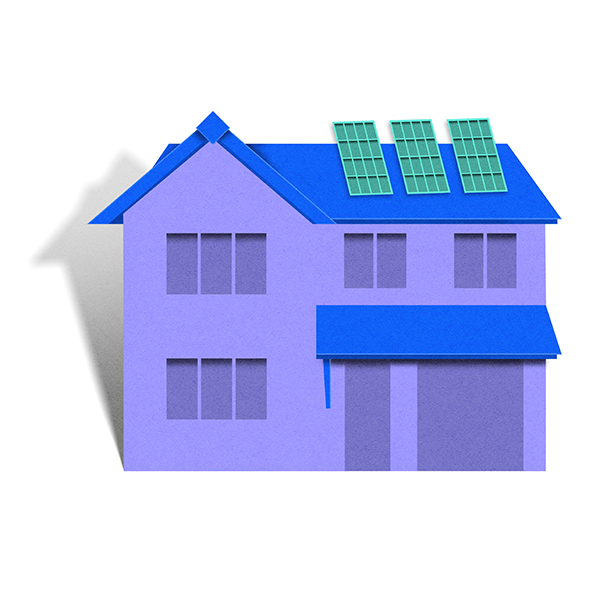Why the green agenda will shape the future of housing: Part one
April 2024

Reaching net zero by 2050 might feel like a huge challenge for the housing sector, especially when other issues in the “here and now” like the cost of living crisis feel more pressing. However, we all know that making this goal a top priority becomes more important with each passing year, and brokers, lenders and homeowners collectively will play a crucial role in shaping the future of sustainable housing.
In 2023, over a quarter (26%) of national emissions stemmed from household energy use1. If we are to reduce these emissions, it will require action and innovation on behalf of everyone in housing. For brokers, this means staying informed and being ready to guide clients towards greener, more sustainable living options will be crucial.
The role of the housing sector on UK emissions
80% of the UK’s estimated housing stock in 2050, the target year for net zero, has already been built today2, but much of Britain’s housing remains insufficiently insulated compared to anywhere else in Europe3.
Building more homes to improve the energy efficiency of UK housing will be critical, and while the government’s 2025 Future Homes Standard could be a positive starting point for new building regulations, the transformation of the housing sector also hinges on the steps homeowners can take to retrofit existing properties.
A typical solar panel installation, for example, can save over 900kg of CO2 annually, with a carbon payback period of approximately 18 months4. This means that all electricity generated by the panel after this time can be considered truly net zero, offsetting any carbon produced from its production.
There are further energy savings to be made from double glazing, recycled water, higher-quality building materials and efficient lighting. The zero-carbon home has gone from a distant dream to a present-day reality, but not for enough homeowners.
With support from the Energy Saving Trust, we've created a useful tool to show people exactly how to make their property friendlier on the environment and make savings on their bills, with an action plan to suit any budget. Take a look at our Home Energy Efficiency tool.
Demand for sustainability
It’s not just the necessity of reducing carbon emissions that will make ‘going green’ a focus for the housing sector – consumers are increasingly switching on to the need to address their own impact on the environment, but also to reduce their own bills by improving the energy efficiency of their homes. Driven by the urgent need to address the current energy crisis, nine in ten homeowners and landlords are now prioritising their property’s carbon footprint5. Now is not the time for discussions, but for tangible actions and outputs.
This trend is particularly evident among the younger generation of homeowners and future first time buyers. Nearly all homeowners aged 18-24 say they plan energy efficiency improvements in the coming year6.
The calls for sustainable living are now impossible to ignore. To keep pace and retain clients, as well as making a positive contribution to yours and future generations living conditions, the mortgage and housing sector must urgently align itself with the green agenda. 2024 promises to be incredibly busy on this front, but innovators, homebuilders, lenders and brokers must all pull together in the same direction, as the challenge to "green up in time” may yet be achievable. In the next article, we’ll explore the steps they need to take to overcome the barriers to improving energy efficiency and to create a greener housing market for all.
References
- https://www.ons.gov.uk/economy/environmentalaccounts/articles/climatechangeinsightsuk/august2022
- https://energysavingtrust.org.uk/retrofitting-the-uks-housing-stock-to-reach-net-zero/
- https://www.greenpeace.org.uk/news/uk-homes-energy-efficiency-higher-bills/
- https://www.renewableenergyhub.co.uk/main/solar-panels/solar-panels-carbon-analysis
- https://www.coventryforintermediaries.co.uk/content/dam/cbs/intermediaries/pdfs/knowledge-centre/green-housing-report.pdf
- https://www.coventryforintermediaries.co.uk/content/dam/cbs/intermediaries/pdfs/knowledge-centre/green-housing-report.pdf

